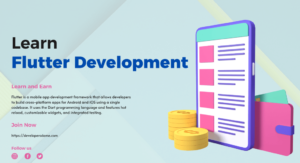Flutter is one of the most popular cross-platform app development frameworks that allow developers to create mobile, web, and desktop apps using a single codebase. One of the most popular and widely used widgets in Flutter is the OctoImage widget. The OctoImage widget is a powerful image widget that provides various advanced features and functionality to make image handling and manipulation easier for developers. In this blog post, we will discuss the OctoImage widget in detail, its features, benefits, and implementation process.
Contents
Q1. What is the OctoImage Widget in Flutter?
The OctoImage widget in Flutter is a powerful image widget that provides various advanced features and functionality to handle images in a more efficient way. It is a part of the Octo package and allows developers to create rich, interactive, and visually appealing images in their Flutter app. The OctoImage widget is similar to the Image widget but offers more advanced features like placeholder images, progress indicators, error handling, and much more.
Q2. What are the Features of the OctoImage Widget in Flutter?
The OctoImage widget in Flutter offers a variety of features and functionality to make image handling and manipulation more efficient for developers. Some of the most important features of the OctoImage widget are:
- Placeholder images: OctoImage allows you to specify a placeholder image that will be displayed while the actual image is being loaded.
- Error handling: OctoImage provides built-in error handling features to display an error message or image if the actual image fails to load.
- Progress indicators: OctoImage displays a circular progress indicator to indicate the progress of image loading.
- Zooming: OctoImage supports the zooming and panning of images using pinch gestures.
- Caching: OctoImage provides built-in caching support to cache images for faster loading in the future.
- Multiple Image Sources: OctoImage allows you to specify multiple image sources and displays them in a stack or carousel format.
Q3. How to Implement OctoImage Widget in Flutter?
Implementing the OctoImage widget in Flutter is straightforward and easy. Here are the steps to implement OctoImage in your Flutter app:
- Add the Octo package to your Flutter project dependencies.
- Import the OctoImage widget from the Octo package.
- Use the OctoImage widget in your app and provide the image URL or asset path as a parameter.
- You can also provide additional parameters like placeholder image, error image, progress indicator, zooming, caching, etc.
Here is a sample code snippet for implementing OctoImage in Flutter:
import 'package:flutter/material.dart';
import 'package:octo_image/octo_image.dart';
class MyApp extends StatelessWidget {
@override
Widget build(BuildContext context) {
return Scaffold(
appBar: AppBar(
title: Text("OctoImage Widget"),
),
body: Center(
child: OctoImage(
image: NetworkImage('https://example.com/image.jpg'),
placeholderBuilder: OctoPlaceholder.blurHash(
'LEHV6nWB2yk8pyo0adR*.7kCMdnj',
),
errorBuilder: OctoError.icon(color: Colors.red),
fit: BoxFit.cover,
height: 200,
width: 200,
),
),
);
}
}
Q4. What are the Benefits of Using the OctoImage Widget in Flutter?
Using the OctoImagewidget in Flutter provides a wide range of benefits for developers. Some of the most important benefits of using the OctoImage widget are:
- Improved user experience: The OctoImage widget provides various features like placeholder images, progress indicators, and error handling, which improve the user experience by making image loading more seamless and intuitive.
- Simplified image handling: The OctoImage widget simplifies image handling and manipulation by providing built-in support for zooming, panning, caching, and displaying multiple image sources.
- Efficient performance: The OctoImage widget uses advanced caching and image-loading techniques to ensure efficient and fast performance, even for large and high-resolution images.
- Customizable design: The OctoImage widget allows developers to customize the design and appearance of the widget to match the app’s overall theme and style.
Q5. Are there any Limitations to Using the OctoImageWidget in Flutter?
While the widget in Flutter provides various advanced features and benefits, there are also some limitations to using the widget. Some of the most important limitations of using the OctoImage widget are:
- Dependency on external packages: The OctoImage widget is a part of the Octo package, which means that developers need to add an external dependency to their project to use the widget.
- Learning curve: The widget has a relatively steeper learning curve compared to the standard Image widget in Flutter, which may require developers to invest more time and effort to master the widget.
- Limited browser support: Some features of the OctoImage widget, such as zooming and panning, may not be supported in some web browsers, which may limit the app’s compatibility with different platforms.
Conclusion:
The OctoImage widget is a powerful image widget in Flutter that provides advanced features and functionality to handle images in a more efficient and intuitive way. By using the OctoImage widget in your Flutter app development project, you can improve the user experience, simplify image handling, and enhance performance. This comprehensive guide has provided an overview of the OctoImage widget, its features, benefits, and implementation process, making it easier for developers to use the widget effectively in their Flutter app development projects.

